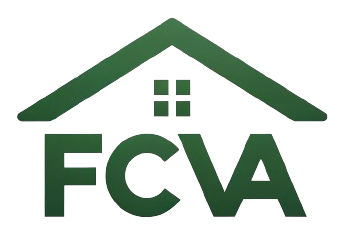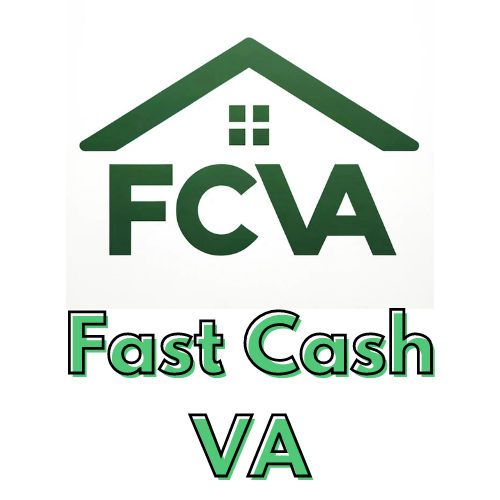Are you contemplating selling your house in Maryland and hoping for a swift, cash-based transaction without the typical hassle? As Maryland homeowners, we often find ourselves at a crossroads, where the urgency to sell rests atop life’s ever-evolving circumstances. Whether prompted by financial necessity, a personal milestone, or investment strategy, selling a house quickly in Maryland doesn’t have to be a daunting experience. Through this article, we aim to guide you step by step on how to achieve a seamless and stress-free home selling process backed by the expertise of Fast Cash DC.
## Understanding the Urgency in Selling
When we decide to sell our house quickly, it is often driven by unique personal or economic factors. These might include needing to relocate swiftly for a job, downsizing due to lifestyle changes, or liquidating assets during financial hardship. The Maryland housing market, renowned for its diverse landscapes and economic opportunities, presents a unique set of challenges and advantages for fast sales. Understanding these dynamics is key to achieving our selling goals efficiently.
Recognizing Market Dynamics in Maryland
The real estate market in Maryland is characterized by its vibrant economic landscape, cultural diversity, and proximity to several major cities. This creates a high demand for housing, but also poses challenges due to market fluctuations and local regulations. It’s crucial for us to stay informed about these factors, as they play an integral role in determining how quickly and lucratively we can sell our properties.
Assessing Personal Motivations for a Quick Sale
Each homeowner’s motivation for selling varies, and understanding these reasons helps streamline the selling process. By assessing our individual situations—whether driven by an urgent financial need, personal circumstances, or a strategic investment choice—we can better plan our sale, selecting strategies that align with our objectives.
Step 1: Preparing Your Home for a Swift Sale
Preparation is the cornerstone of a successful home sale. A well-prepared home not only draws more interest but can also potentially increase the sale price. We should focus on both aesthetic appeal and structural soundness when getting ready to sell.
Conducting Necessary Repairs and Enhancements
Before listing our house, addressing any outstanding repairs is essential. Small upgrades, such as a fresh coat of paint or updated fixtures, can significantly enhance appeal. For those of us on tighter budgets, prioritizing tasks that offer the highest return on investment will make a notable difference.
Staging for Success
Staging our homes can influence potential buyers by allowing them to envision living in the space. Expert staging doesn’t necessarily require professional assistance but can involve simple acts like decluttering, rearranging furniture, and amplifying natural light. The objective is to create an environment that feels inviting yet allows buyers to see the home’s full potential.
Step 2: Setting the Right Price
Pricing sets the tone for the entire selling process. It is vital that we strike a balance between attracting interest and obtaining a fair value for our property. Accurate pricing can be the difference between a languishing listing and a rapid sale.
Conducting a Comparative Market Analysis
A comparative market analysis (CMA) helps us pinpoint a competitive and attractive price by comparing similar homes in our area that have recently sold, are currently on the market, or have expired listings. We must consider factors such as location, size, and condition in our analysis to ensure our price reflects current market conditions effectively.
Understanding the Value of Flexible Pricing
While pricing competitively is crucial, remaining flexible is equally important. The market can shift, and allowing some room for negotiation can facilitate a quicker sale. By maintaining flexibility in our pricing strategy, we accommodate a broader range of potential buyers and encourage offers.
Step 3: Marketing Your Property Effectively
A well-executed marketing strategy brings attention to our property, capturing the interest of potential buyers. With technology and social media at our fingertips, there are more opportunities than ever to showcase our home to a broader audience.
Leveraging Online and Offline Marketing Channels
Harnessing the power of both digital and traditional marketing platforms can maximize our house’s exposure. Digital platforms include social media, real estate websites, and online classifieds, while offline methods involve yard signs, open houses, and flyers. A combination of these approaches will widen our reach and attract diverse buyer segments.
Crafting Compelling Property Listings
The way we describe and present our property can significantly influence buyer interest. High-quality photographs and well-written descriptions that highlight the unique features of our home are paramount. We should aim to craft a narrative that aligns with what potential buyers are seeking, emphasizing elements such as location benefits, school districts, or proximity to amenities.
Step 4: Choosing the Right Selling Approach
Deciding on the most suitable selling method can impact the speed and ease of our sale. Each approach harbors distinct advantages and potential drawbacks.
Exploring Traditional vs. Cash Sale Options
Traditional sales often involve listing our property with a real estate agent, conducting open houses, and entertaining offers over time. In contrast, cash sales, like those facilitated by Fast Cash DC, promise expedited processes, often eliminating obstacles such as financing contingencies and lengthy negotiations.
| Selling Methods | Traditional Sale | Cash Sale |
|---|---|---|
| Timeline | 30-90 days | 7-30 days |
| Negotiations | Extended negotiation periods | Minimal negotiations |
| Contingencies | Financing and inspection contingencies | Typically none |
| Closing Process | Lengthier, often dealing with lender delays | Streamlined, quick closing |
Assessing Which Option Aligns with Our Needs
While a cash sale provides speed and convenience, a traditional sale might yield a higher price given favorable market conditions. Our decision should reflect our priorities, whether they lie in immediacy, price, or reducing complexities.
Step 5: Engaging with Interested Buyers
Successful engagement with buyers increases the likelihood of a sale. Direct and professional communication can enhance our property’s appeal and foster trust in potential buyers.
Managing Inquiries and Showings
Prompt responses to inquiries and flexibility in scheduling showings demonstrate our commitment to the sale. We should present our home at its best during viewings, ensuring it is clean, well-lit, and devoid of any clutter.
Negotiating Offers and Closing the Deal
When offers materialize, our negotiation skills come into play. It’s important to stay objective, considering both the numerical value and the terms of each offer. Closing the deal may involve several stages of negotiation, particularly in a conventional sale, thus requiring patience and strategic foresight.
Step 6: Understanding the Legal and Financial Implications
A comprehensive understanding of the legalities and financial aspects connected to a home sale is indispensable. These nuances can substantiate or undermine our transaction depending on how adeptly they are navigated.
Navigating Regulatory Requirements in Maryland
Maryland, like all states, has specific laws governing real estate transactions. Understanding disclosure requirements, taxes, and other regulatory factors ensures that we remain compliant and protects us from potential legal issues post-sale.
Handling Financial Considerations
From assessing the impact on our capital gains to understanding how selling affects our broader financial situation, meticulous consideration of financial elements is necessary. This might involve consulting with financial advisors or real estate attorneys to ensure comprehensive financial understanding and planning.
Step 7: Finalizing the Sale
As we proceed to finalize the sale, our focus shifts to ensuring that all documentation is correctly processed and the transaction is closed smoothly.
Conducting a Final Walkthrough
A final walkthrough is an opportunity for us to confirm that all agreed-upon conditions have been met and that the property is in the condition promised in the sales agreement. This step prevents last-minute complications and ensures transparency with the buyer.
Closing Procedures and Transfer of Ownership
The closing process involves signing the necessary documents and officially transferring ownership to the buyer. Given its complexity, it benefits significantly from professional oversight to ensure accurate and efficient completion. At this stage, everything comes to a close, culminating in the successful, smooth transfer we have aimed for.
The Fast Cash DC Advantage
By opting for a partner like Fast Cash DC, we can leverage expert guidance and efficient processes specifically tailored for Maryland homeowners. Fast Cash DC enables us to navigate each step—preparation, pricing, marketing, choosing the appropriate sale method, engaging with buyers, understanding legal/financial requisites, and finalizing transactions—with confidence and ease.
Our venture into selling a house quickly in Maryland reflects a keen alignment between personal aspirations and market opportunities. With the right approach, resources, and guidance, we are well-equipped to achieve a hassle-free, lucrative sale that fulfills our immediate needs and positions us favorably for future endeavors in real estate.

